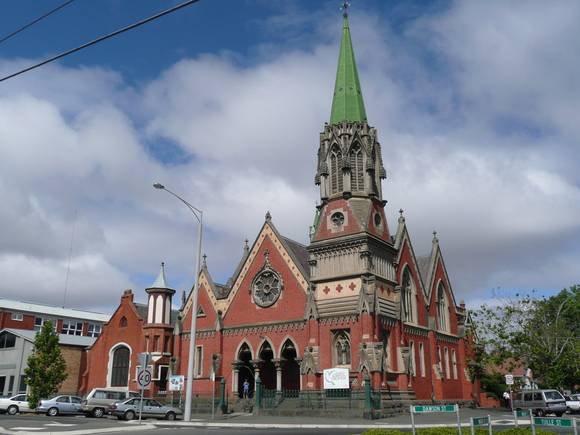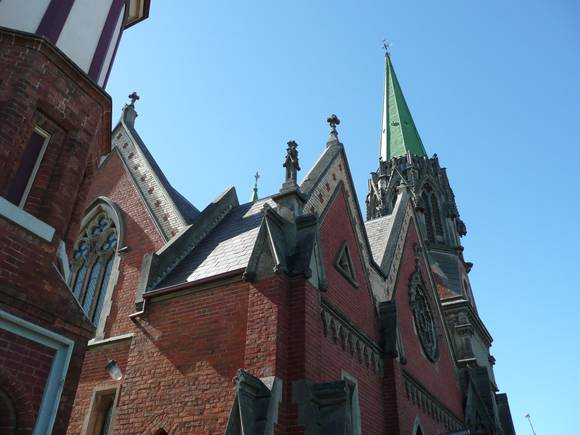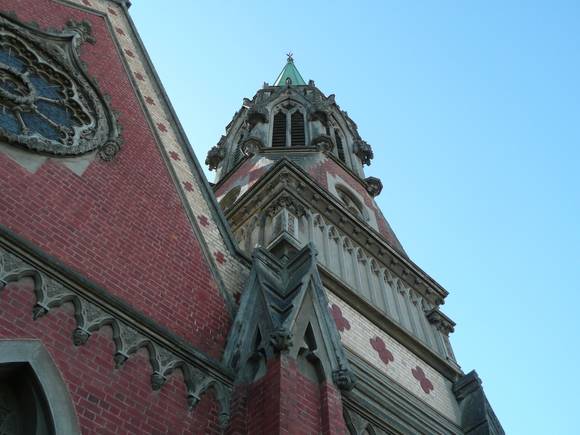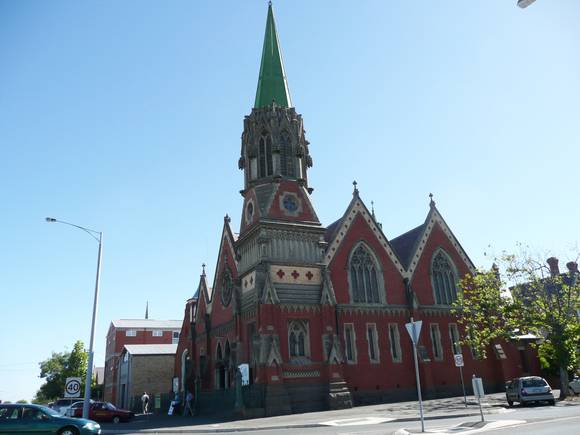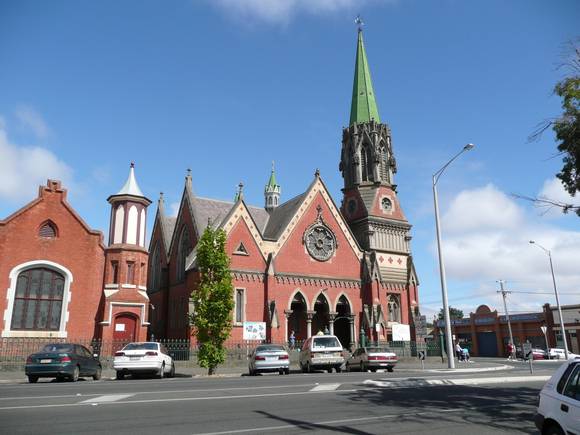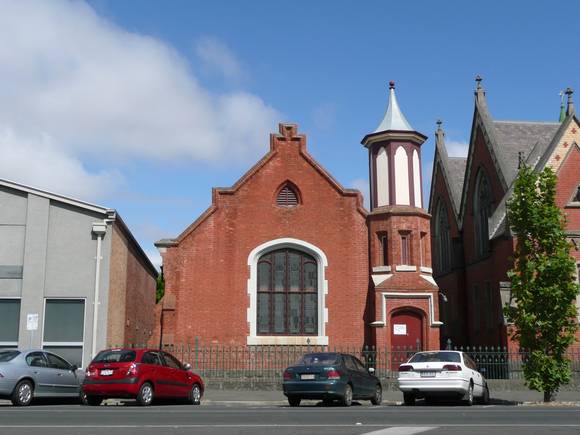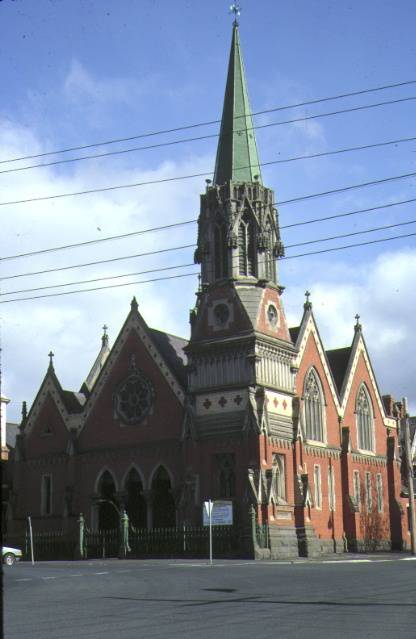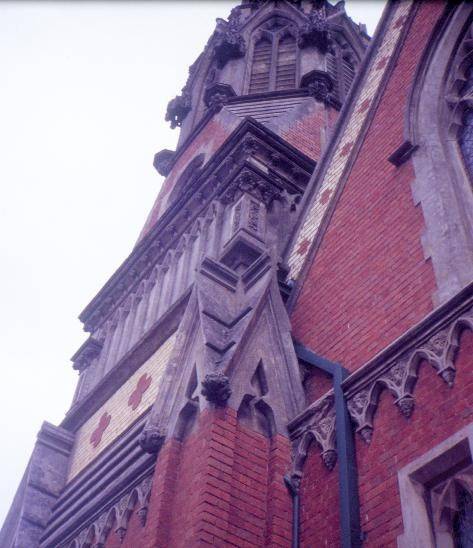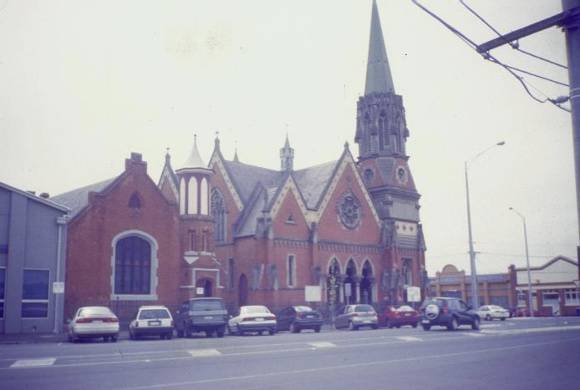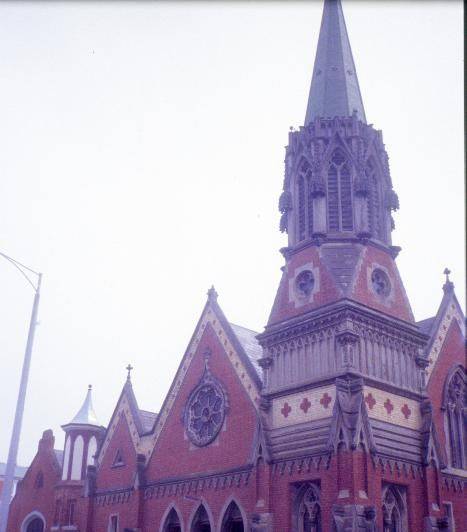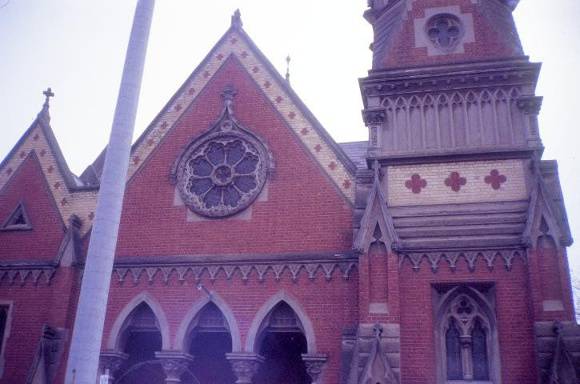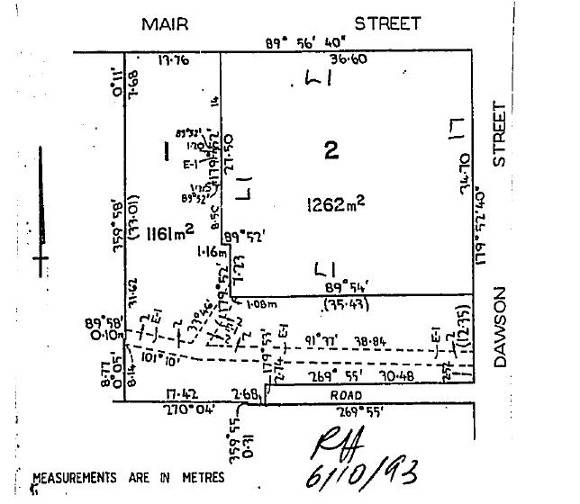| Back to search results » | Back to search page » |
|
FORMER CONGREGATIONAL CHURCH AND HALL
Statement of Significance
The former Congregational Church, Ballarat was constructed in 1881-82 to the design of architects CD Figgis and HR Caselli. The chancel and vestry were added in 1906 to the design of Molloy and Chandler. The Church hall was built in 1862. Designed as a school by architect JA Doane, it served the Congregational community as a chapel until the present church was officially opened in 1882. The Ballarat Congregational Church, now part of the Uniting Church of Australia, was sold to the Ballarat Christian Fellowship in 1981. The design, massing and detail of the former Congregational Church demonstrate creative accomplishment in the history of architecture in Victoria and the church represents an extraordinary example of eclectic Gothic architecture. In particular, the foliated capitals of the internal and external columns, anticipating the art nouveau movement, are of major importance. The Church demonstrates outstanding craftsmanship in building construction and decoration through its elaborate and finely detailed corner tower, its richly decorated wheel window above an arcaded portico and its four free standing columns with superb Corinthian-esque capitals approaching art nouveau character supporting reduced hammer beam trusses and a boarded ceiling. The Church is of architectural significance for its association with the prominent Ballarat architects HR Caselli and CD Figgis. Amongst other works of Caselli are the Ballarat East Fire Station and the interior of the Ballarat Town Hall. Other works of Figgis include the Ballarat Mining Exchange and the Geelong Club. The complex has a strong association with the Congregational denomination, first established in England during the seventeenth century with the Puritan movement of dissent from the Church of England. The complex is significant as the centre of the Congregational community in Ballarat since 1862 when the hall (then the school/chapel) was opened for worship. The creative and eclectic style of the Church demonstrates the Congregationalist’s belief in the autonomy of each congregation.
Group
Religion
Category
Church


